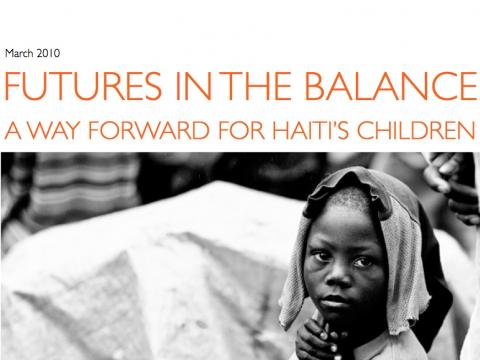Futures in the balance
Download
One of the worst disasters of the new millennium ended the lives of over 220,000 Haitians, injuring 300,000 more, and leaving well over a million people displaced and homeless.The impact of the earthquake is still apparent across the capital, Port-au- Prince. Rubble lies thick in the streets, and around 500 spontaneous settlements continue to house at least 600,000 Haitians living in inadequate conditions.
Less than three months on from this disaster, it is already time to start shifting the focus from Haiti’s immediate needs to those of their uncertain future.
Already, the international community has united in powerful and innovative ways to rebuild this poor and vulnerable country.The most ambitious relief and recovery plans in the country’s history are taking shape. Record levels of funding are on the table. The level of response, of money, of involvement, represents unprecedented opportunity to reshape Haiti’s future. But how is it to be done?
World Vision, a child-focused relief, development, and advocacy organisation, has been working with the poorest and most vulnerable communities in Haiti for over 30 years. During this time, the resilience and determination of Haitians has been demonstrated time and again. Sadly, these strengths have been called upon too often – a history of uncertainty, of crushing poverty, food shortages and lack of basic services has held generations of children and communities back from achieving their potential.
A series of initiatives (such as the Post- Disaster Needs Assessment (PDNA) and various pre and post-earthquake reconstruction and recovery frameworks), led by the Haitian Government in